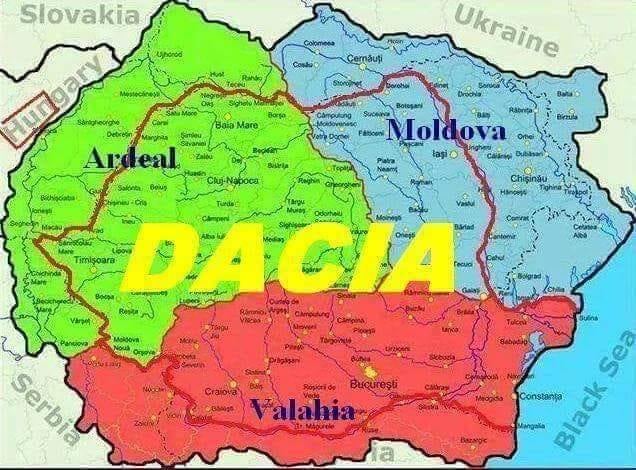
Who is the rightful owner of Transylvania some people are asking themselves and especially people from Hungary who some of them consider Transylvania as theirs, while the international community all recognize Transylvania as Romanian.
Well before we can answer such a difficult question, we need to go deep into history. First we need to understand what is the origin of Romanians and Hungarians and after this is understood, we can draw the conclusion of who is the rightful owner of Transylvania.
We will start with the most complex question first, what is the origin of the Romanian people? Many in the world have no idea who they are or where they came from but Romanians know their history very well.
So who are the Romanians and where did they came from? For many years, foreigners called them “vlachs” and their southern region “Wallachia”. The term vlach is derived from German word “walhaz” which literally means “Latin speaker“. Romanians rarely if ever called themselves among themselves “vlachs”. This is more of a foreigner term applied to them. They always called themselves “Rumâni” from “Rum” (Rome). The term of vlachs was even applied to Italians. Poles referred to Italians as “Włosi” and the country of Italy itself as “Włochy”.
This term of “vlach” derived from German word “walhaz” is more or less just a nickname. It is probably a revenge term invented by the Germans against the Romans as the Romans also nicknamed them “Germans”. Germans for example do not call themselves “Germans”. The term was invented by Rome and applied to these people to describe them as savage barbarians. Germans call themselves “Deutsches Volk” and their country is Deutschland. Nobody calls them by the correct name. The French call them Allemagne for example. So it is the exact same thing that happened with Romanians. Nobody called them by their correct name “Romanians”. Germany took revenge on Rome for this word and named the Romans “Walhaz” in return. For example, in a letter from 1521, here is how the Romanians from the “Wallachia” region refered to their own country as “pre io-i va fi voia pren Țeara Rumânească, iară el să treacă.” which translates as “freedom to pass through Romanian Country wherever he pleases.”
Now why do Romanians called themselves “Rumâni” (later and current day “Români”)? What exactly is their connection to Rome? 2000 years ago, in the region that Romania is today, there was a country named Dacia, exactly as the Romanian car brand Dacia. And while we’re describing names, we would also like to briefly describe gypsies so that there is no confusion. Gypsies are Indian nomadic people who traveled to Europe. For many years the British called them “gypsies” as in Egyptians because they thought they came from Egypt. It was only them and the Spanish who thought they came from Egypt. Spanish calls them “gitanos” derived from Egiptanos. However all other nations of Europe called them Zingari in Italian, Zigeuner in German, Tigani in Romanian, etc. None of these terms have any connection to Egypt. Only the English and Spanish terms had connections with Egypt. Anyway the gypsies wanted to change their name because they say it was falsely given to them as they have no association to Egypt but now just a few years ago the new name they adopted “Romani people” is complete nonsense. Such a name shouldn’t be tolerated or accepted by the international community. They didn’t want to be confused with Egyptians only to be confused with Romans and Romanians? There is no connection between gypsies or how they go by their new name “romani people” and the ancient Roman Empire or Daco-Romans, Romanians of today. “Romani people” or gypsies are INDIANS from India’s Punjab region. If they dont want any confusion they should simply call themselves what they are, Indians from India. Their name comes from Greek word “tsinganoi” which translates as “untouchable” because they were dirty and they stank. The Greeks invented the term because it was them who had first contact with these Indians as they were sent by the Ottoman Empire into Greece and from there they migrated everywhere. Now back to Dacia…
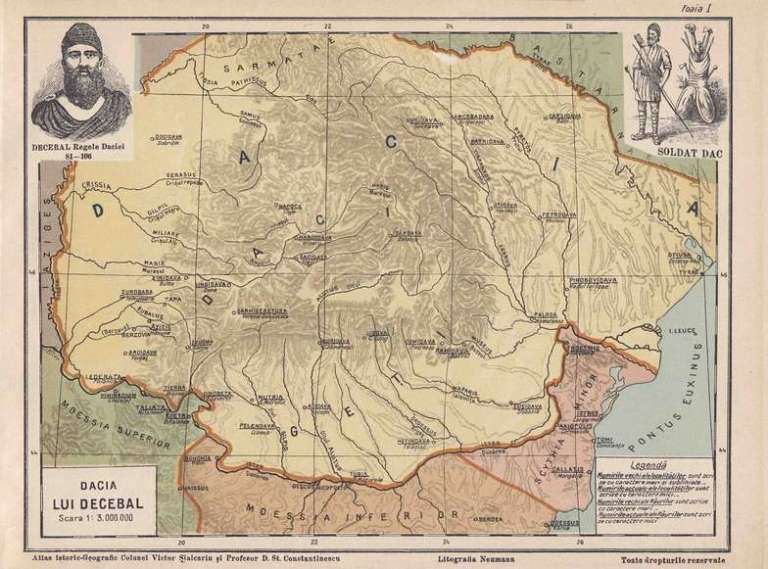
After previous failed wars to conquer Dacia, the Roman Empire finally managed to conquer most of Dacia in 106 under emperor Trajan. Decebalus was the last king of Dacia and he committed suicide to avoid being humiliated in Rome. After its conquest, Dacia was submitted to intense Romanization until 271-275 when Roman troops were recalled from Dacia by emperor Aurelian as it was becoming too expensive to defend due to constant invasion of nomads.
From 106 to 271 there are 165 years. Many mixed children were born and many generations passed during these years as lifespan was shorter back then. Dacia was Romanized. The Roman soldiers who were regularly sent there, spoke a vulgar Latin language which is very similar to current day Romanian language. Romanian in fact is one of the closest languages to Vulgar Latin, in some instances even closer than Italian, far surpassing other Latin-based languages such as Spanish, French, Portuguese or Catalan. Romanian language, despite containing some 10-15% Slavic import words due to having so many Slavic neighbors, is in direct competition with Italian as who is the closest to the original Vulgar Latin. Take the word BEAR for example. In official Latin the word is “URSUS” but in Vulgar Latin suffixes like “us” or “um” are not used. Soldiers did not say the word “Ursus” what they said was “Urs” without “us” and the Romanian word for bear is… “Urs” exactly like in Vulgar Latin. In Italian the word is “Orso”. So not only they changed the suffix from “us” to “o” but they also changed the first letter… “Urs” being far closer to Latin than Italian “Orso”. Or another example is the the yellow color “Galbinus” in Latin. In Vulgar Latin there is no “US” ending and you get “Galbin”. The official Romanian word for yellow is “Galben”, almost exactly the same. Furthermore, peasants from villages of Romania actually say “Galbin” with I, exactly like in Vulgar Latin. Only in the big cities they say “Galben” but the city people look down on the peasants, thinking they are stupid for saying “Galbin”… but stupid or not, their form of the word is exactly the same as in Vulgar Latin. The Italian word for yellow is “Giallo”. It seems that Italian language went through more heavy transformation of Latin than Romania. Another example would be “sky” which in Latin is “Caelum”. AE is pronounced “E” in Latin so you get “Celum” and “UM” ending is not used and pronounced in Vulgar Latin so you’re ended up with the word “CEL”. In Romanian, the word is “CER”… Again shockingly close. Far closer than Italian “Cielo”. Clearly these people are the direct descendants of Rome.
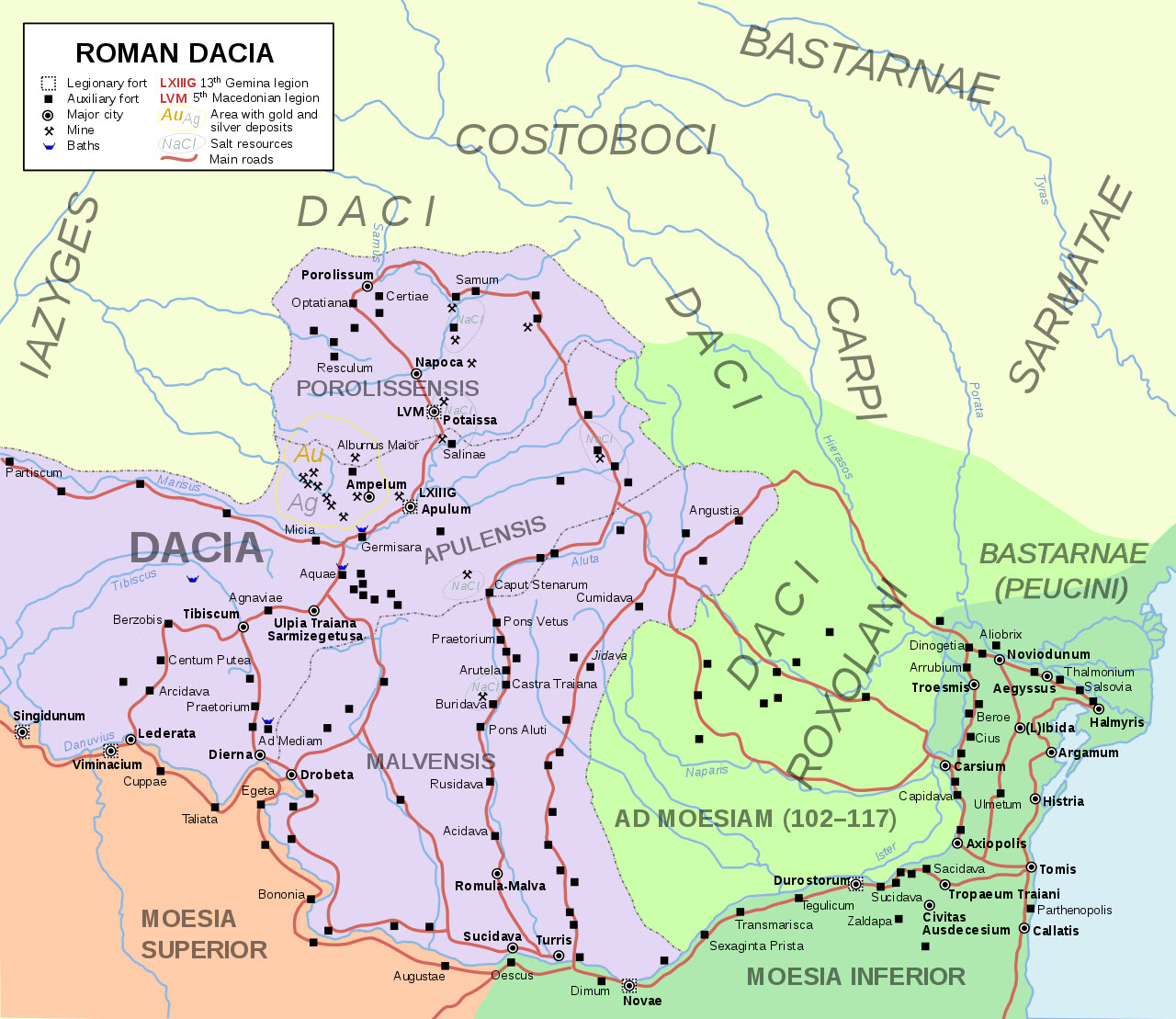
In this map with purple color you can see the Roman Dacia and with green are the free Dacians who were also subject to lesser indirect Romanization through commerce, traveling with the Daco-Romans. As you can see, the Romanization took place mostly in Transylvania and Western half of Wallachia (Banat and Olt sub-regions). This was the core of Romanization. This is where it all took place.
In 336, Roman emperor Constantine the Great tried to reconquer Dacia and took the title “Dacicus maximus” thus reconfirming the presence of Daco-Romans in the region. So they didn’t disappear after the Aurelian withdrawal in 275. After all the civilians didn’t withdrew anywhere, they didn’t evacuate, just Roman soldiers withdrew.
The Romans held bridgeheads north of the Lower Danube, keeping Dacia within their sphere of influence uninterruptedly until 376. After that, the newly formed people were left without a leadership, no monarchic line, nothing, so they were mostly focused on farming and agriculture, not having a leadership capable of reorganizing a state.
Most of the newly formed Daco-Roman people were farmers and shepherds, living peaceful rustic lives, caring for animals and working the fields. After loosing connection with Rome somwhere in 376, a black hole comes over this region as literally no information at all is recorded about the Romanians in history until they finally reemerge in 900. Somewhere in 900, the Magyars (Hungarians) arrived in Europe from Asia and in their historic writings “Deeds of the Hungarians” they wrote that when they arrived in Europe, in Transylvania there was a vlach kingdom ruled by voievode Gelou. Some say that his name could be fictional but however Gelu is a common Romanian name even to this day so it can’t be fictional. OU in Latin is pronounced U. So Gelou is now Gelu as spelling has changed but pronunciation remained the same. A notable man named Gelu today for example is Gelu Voicu, a folk singer.
The documents say that the Hungarians fought with the Vlachs, won and conquered Transylvania. Even if all of it was fictional (it is not) the document was written in 1150 by an unknown Hungarian historian and this also attests and proves to the fact that there were Vlachs in the region in 1150. They didn’t appear out of thin air as some Hungarians like to claim. Furthermore other writings from other countries confirm that Hungarians conquered an existing kingdom in Transylvania and Pannonia region (West of Transylvania) and settled there. When the Hungarians arrived in Europe, they didn’t find empty lands. No lands were ever empty in Europe. Anyone making such a claim is a lunatic.
Furthermore look how the Romanians reemerged exactly in the same regions that were under Roman rule, Transylvania and west Wallachia (Banat, Olt):
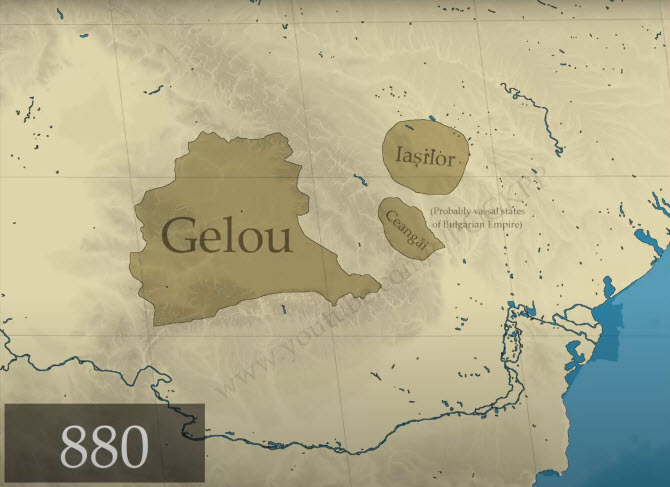
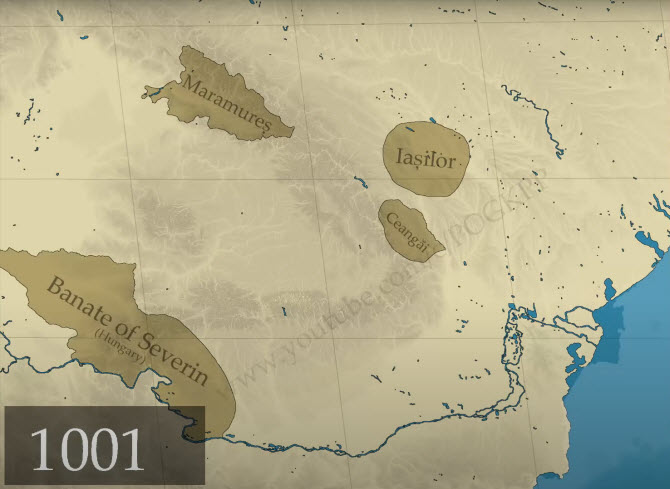
In 1066, Byzantine author Kekaumenos writes that north-west of Danube is the homeland of Vlachs (Romanians) and the Serbians who moved there recently in the area. In his writings he associates the Vlachs with the Dacians and the Bessi and with the Dacian king Decebalus. Kekaumenos made the association of Vlachs with Dacians from ancient historical sources. Notice how the writer said that North-West region of Danube is the homeland of Vlachs. North meaning Transylvania and West meaning the west part of Wallachia which did not yet exist as a state in 1066 yet. These are the exact locations that were a Roman Empire colony. Also these 2 regions are the first Vlach regions to reemerge. Additionally the author mentioned that the Serbians moved there more recently in the Vlah homeland. Basically with this he said that the Vlachs have always been there.
In 1160s, Byzantine historian John Kinnamos, wrote in his books that “Vlachs are said to be formerly colonists from the people of Italy”. There you go… the proof of all proofs. Before Wallachia or Moldova or Transylvania became independent kingdoms, Byzantine historian saying that the Vlachs are Romans from Italy, thus confirming their existence in the region and their origins way before they established the 3 independent kingdoms.
William of Rubruck, a Dutch monk from Netherlands, wrote somewhere in the 1250s that Vlachs migrated into the region from the Volga region of Russia together with Bulgarians and Hungarians but this is completely inaccurate. From where and whom would a group of people learn Latin language near the Volga River in Russia and then migrate to Balkans? Additionally, previous historians from the region (Byzantine) already confirmed the presence of Vlachs in the regions as descendants of Dacians and Romans. This monk is used a source by Hungarians who dispute the origins of Romanians. However his theory is just a fantasy.
In 1282 Hungarian historian Simon of Kéza wrote that “the Vlachs used to be the Romans’ shepherds and husbandmen who elected to remain behind in Pannonia when the Huns arrived.” So as you can see even a Hungarian confirmed the Daco-Roman theory 800 years ago.
Another unknown author’s from the same time period, in his Description of Eastern Europe from 1308 likewise states that the Balkan Vlachs “were once the shepherds of the Romans who had over them ten powerful kings in the entire Messia and Pannonia.”
In early 1300s Wallachia reemerges as an independent kingdom under voievode Basarab and expands from West Banat and Olt towards the Black Sea.
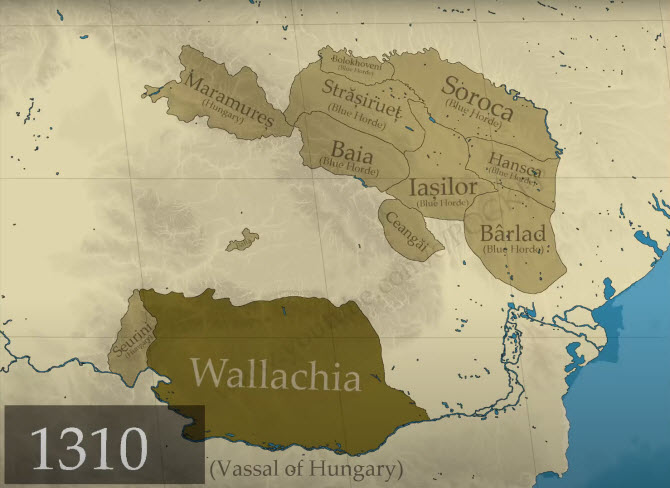
Notice how “vlachs” (Daco-Romans) reemerged EXACTLY in the same regions that were conquered by Rome. Here’s the 2 kingdoms put together in the same map, the Transylvanian kingdom and the southern kingdom even though there is a 400 year difference between them, these are the first signs of vlachs reemerging after Rome lost contact with them in 376.
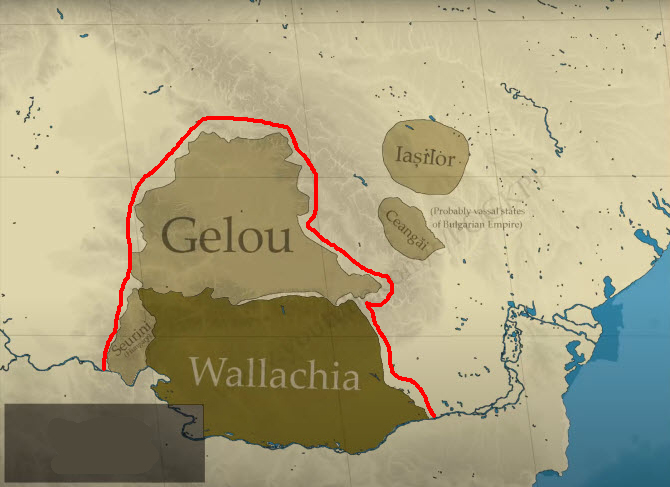

Take a look again at the region that was occupied by Rome until 275. Ohhh would you look at that…… what a coincidence……… the Daco-Romans reemerged in the SAME EXACT regions where Rome colonized them, all speaking a Latin based language, calling themselves “Rumani from Rum” and the outside world calling them “vlachs” (Latin speakers)… what a coincidence!
Now from this point forward evidence gets even stronger that Transylvania was not just a vlach land but in fact it was the CORE of vlachs. Somewhere in the 1350s Dragos left Transylvania and went on to found the independent nation of Moldova which was already inhabited by vlachs but notice how from Transylvania he went into Moldova, again attesting to the fact that Transylvania was the core of vlachs. Even in Hungarian chronicles, Dragos is described as a Roman and his people as “Romans”. Not even “Vlachs” or “Romanians” but directly “Romans” from Roman Empire.
King Stephen the Great of Moldova in 1468 lead a military campaign into Transylvania and tried to liberate it from Hungarian rule, which again attests to the fact that Transylvania was a vlach homeland occupied by Hungary.
In 1600 king Michael the Brave of Wallachia unified Wallachia, Moldova and Transylvania into one single country, marking the first union and the birth of Romania however, his rule and united country didn’t last long as he was surrounded by 3 mega empires all plotting against Romania and fearing a strong united Romania. To the north Poland empire, to the south the Ottoman empire and to the west Austro-Hungarian empire. Michael ended up being assassinated by the king of Austrian-Hungarian empire. His defeat was not military but rather just a scummish assassination.
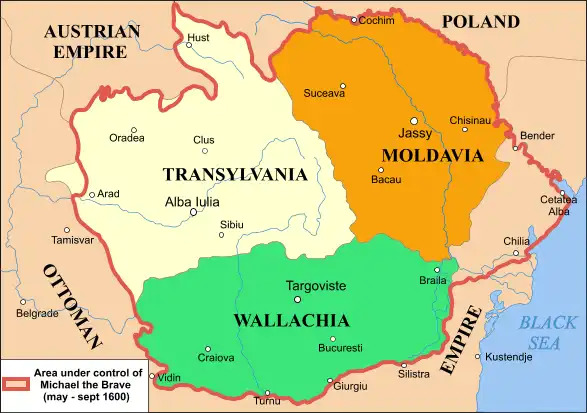
Throughout the years many Romanian revolutions took place in Transylvania such as the Revolt of Horea, Cloșca and Crișan in the 1700s, or the Avram Iancu revolution in the 1800s, all revolting for basically the same reason: living oppressed under Hungarian rule, not ensuring them religious rights and liberties, they were banned from moving and owning properties in cities, they were forced to live as peasants in villages only and so many other anti-Romanian racist laws.
The Hungarians living in Transylvania now are not even Magyars, they are not actual Hungarians, they are called Szekely people and their origin is unknown. Furthermore back in the past the Szekelys were allies of Vlachs and fought along them numerous times against the Ottomans, an example being when they joined Vlad the Impaler (Dracula)’s army to defend Wallachia from Ottoman invasion. Szekelys also assisted Stephen the Great’s army in his fights against the Ottomans and many of them joined even Michel the Brave’s army and fought against Hungary to liberate Transylvania from Hungary and create Romania. Today the Szekelys are brainwashed by Budapest and some say even Moscow into thinking they are Magyars and enemies of Vlachs (Romanians) when in fact throughout their history they have always been good friends.
Now that we explained the origins of Romanians which as you can see they have always been there, let’s look into Magyar origins. The Magyars often like to laugh at Romanians and tell them they don’t know their history but in fact Romanians known their history quite well. Simply put, they are Daco-Romans and they have always been there since the beginning of time but how about the origins of Magyars? Let’s see how well they know their history.
We know they arrived in the Balkans somewhere in the year of 900, conquered Transylvania and Pannonia, from there, they led many invasions into the West, even trying to conquer Italy’s capital, Rome, they ran many plunder and pillage campaigns, raping and killing people and stealing their treasures. They were the pagan burglars of Europe, thieves and murderers. They only began to cool down a little after they converted to Christianity but initially they were brutal demons from Hell. All of Europe was terrified by them and hated them. In the map below you can see how shortly after they arrived in Europe they began the plunder and pillage everyone, Spain, France, Germany, Italy, Greece, everyone fell victim to these brutal killers and thieves who were pagans in religion.
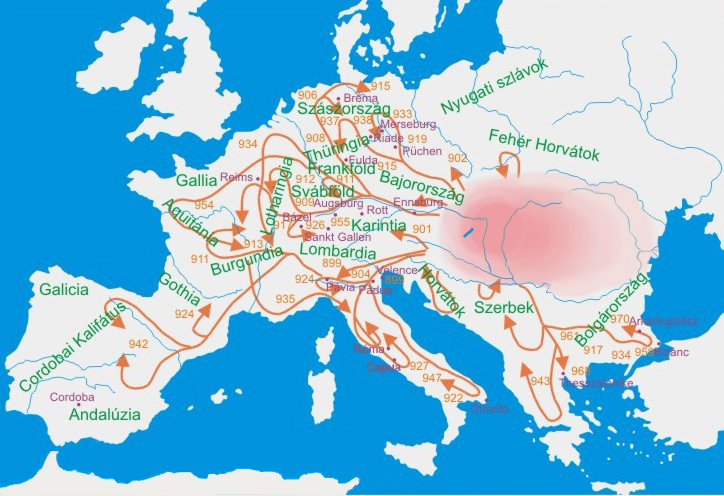
So we know their history since the moment they arrived in Europe. They established their capital in Esztergom and then continued to move it until finally Budapest. They finally converted to Christianity and became better people, stopped their brutal raids, they allied with Austria and made a powerful empire, this is all known history… however, where did they came from? Where was their country before? What was the name of their capital prior to moving to Europe? What kings did they have? Who are their ancestors? Why did they even leave? Only to plunder and pillage? Were they under threat by someone there? What was their history before they arrived into Europe? Little is known. All we know is that they were nomads who migrated into Europe from Ural Mountains of Russia near the Volga river. Their exact location is not really known, this is all just speculation. They do not know anything about their history prior to arriving in Europe.
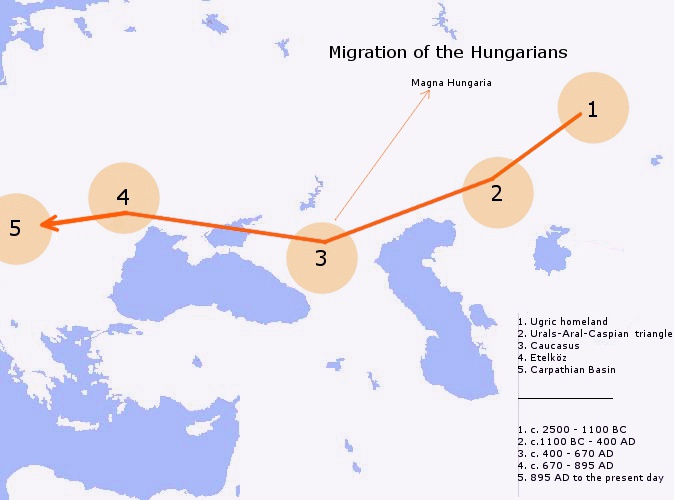
And now these people who are clearly invaders and outsiders, come to Europe and lay claims to what is theirs? A nomadic people who when arrived in Europe, the first thing they did was to kill their hosts and steal from them. Now if there is someone who doesn’t really know their history, its the Hungarians.
As for the rightful owner of Transylvania, without a doubt, Romania is the rightful historical owner of Transylvania. Just because Hungary illegally occupied it for nearly 1000 years, doesn’t mean its theirs. Transylvania is not just some random region of Romania, it is in fact the CORE of Romania, it is the place where their identity was formed, it was the place where they were Romanized.
And last but not least, territory ownership has always been achieved through brute strength and power. For many years Hungary had more power thus it FORCEFULLY owned Transylvania, now Romania has gotten way more stronger and now it is forcefully owning Transylvania. Simply put, Hungary couldn’t take it from Romania or they would get their asses kicked really badly. Hungary already got invaded by Romania 2 times over Transylvania. It is best for them to just forget about it and respect the international borders as they are.
In 1918 Romania invaded Hungary and conquered almost all of Hungary, liberated them from communism, (Bela Kun government) and initially wanted to keep territories as far as the Tisza river but gave up on the idea because there were little Romanians in the region and it wouldn’t have been fair towards Hungary to take their territory which was inhabited by mostly Hungarians, so they gave up on the region, installed a democratic government and left, keeping only the territories inhabited by ethnic Romanians. Here’s a French ethnic map of Romania from 1856:
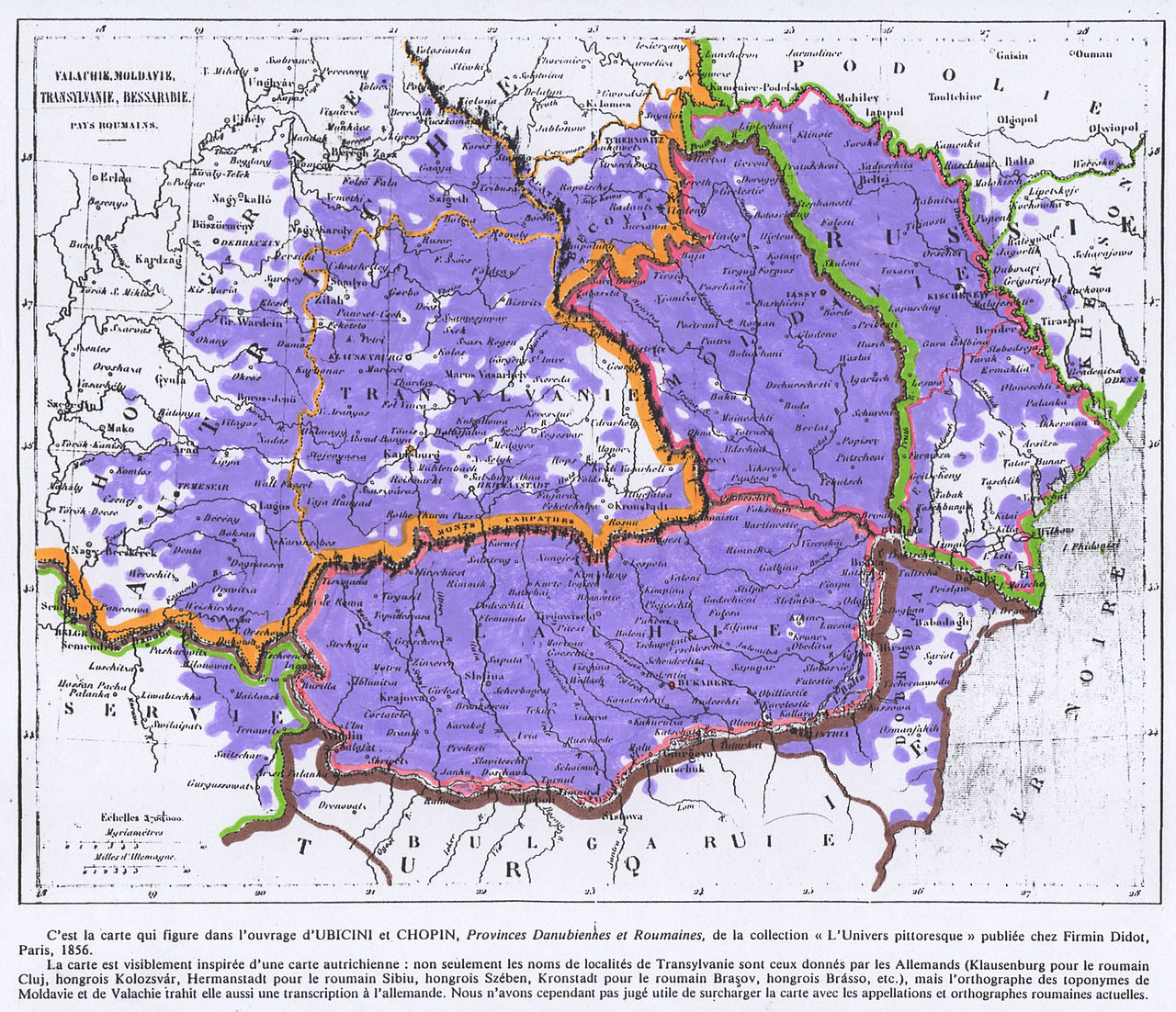
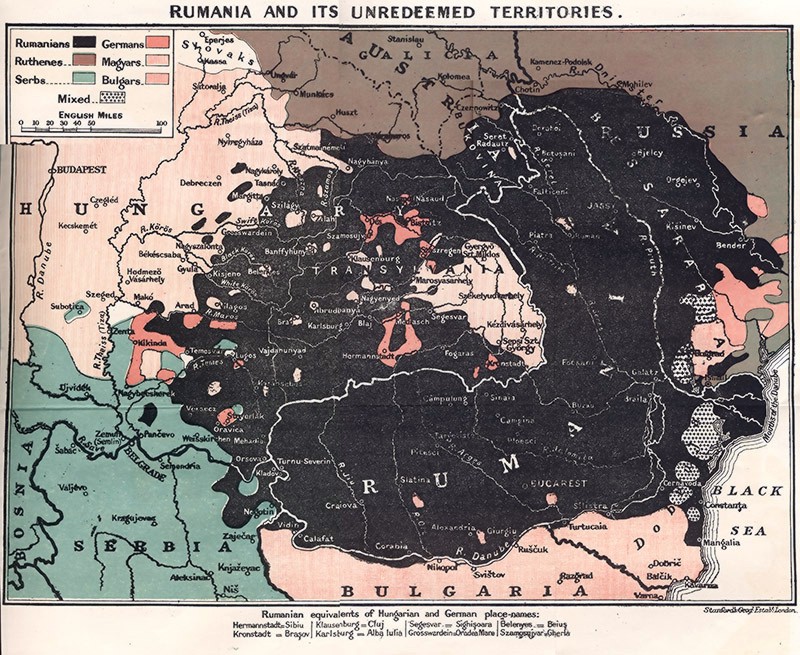
Another map from before World War 1 (somewhere around 1910) from Great Britain tells a similar story, almost all of Transylvania inhabited by Vlachs/Daco-Romans/Romanians. Notice the shape of the country is almost exactly the same with the shape of ancient Dacia.
In 1944, after Hitler gave half of Transylvania to Hungary, Romania invaded Hungary again and again occupied Budapest and went as far as Czechia’s Prague to liberate them from Nazi occupation.
Hungary should better forget about Transylvania. Not only historically its not theirs and ethnically it has always been inhabited by Romanians but they should avoid starting a third war over Transylvania. Hungary should be thankful with what they have now and make the best of it. Be thankful they were allowed into Europe and behave nicely with their neighbors, be good friends, good Christians, do commerce, coordinate to prevent the non-European invasion of Europe from the Middle East. This is the future now. The war over territories is over, now the European peoples are facing other pressing issues.
This article is not anti-Hungarian at all, we are not biased, we are not siding with anyone, we are just telling the facts as they are. We love and support Hungary and its Viktor Orban nationalist-conservative government and how he is standing up against the Muslim invasion of Europe and we hope Romania follows his lead because despite the historical grudges, what Orban is doing, trying to maintain Europe Christian and white, is a great noble thing. We wish the best to both Hungary and Romania and it is time to respect each other’s current borders and make peace and be good friends.
RELATED ARTICLES
- Hungary Becomes First EU Country to Congratulate Putin for Winning the 'Elections'
- After Russian Threats, Romania Begins Building the Largest NATO Base in Europe
- SHOCK! Hungary's PM Calls for Violence in EU capital Brussels Against EU Leaders
- Russia says to Romania what it said to Ukraine before the Invasion: "Romania is not a nation but a way of life"
- Russia tells EU to F*** Off, saying they will Not Return Romania's 91.5 Tons of Stolen Gold











